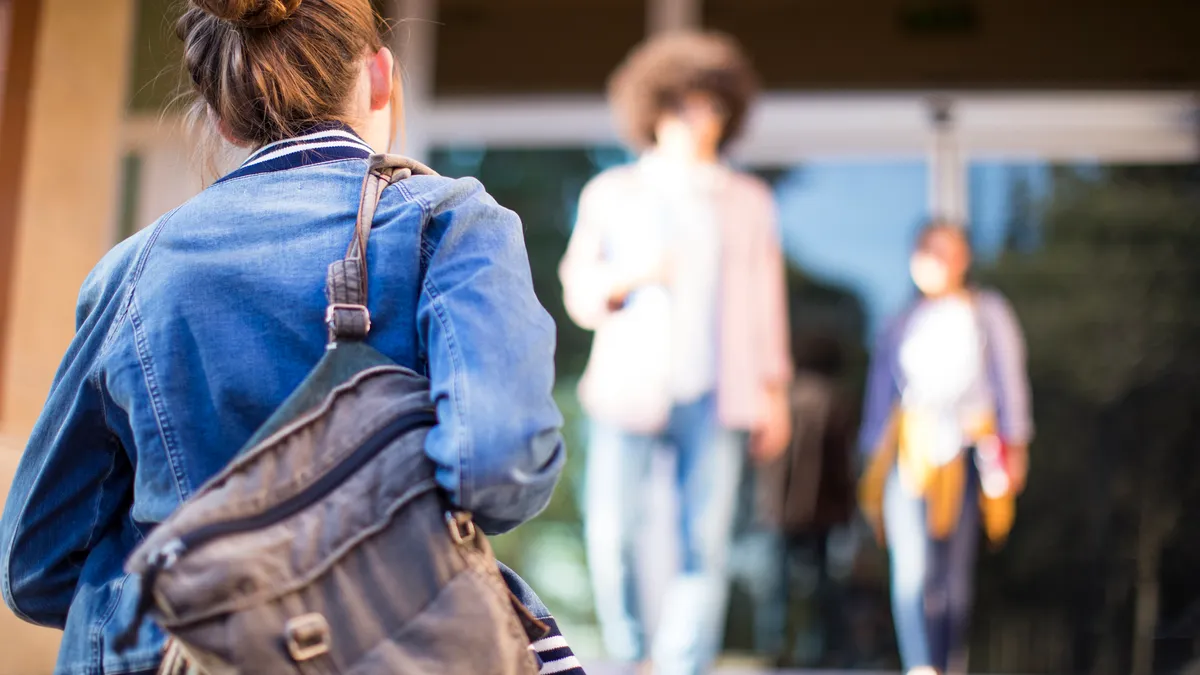Dive Brief:
- Students whose colleges closed were less likely to reenroll or to earn any credential afterwards than students whose institutions did not, according to a new report from the State Higher Education Executive Officers Association.
- The April 26 report, produced with the National Student Clearinghouse Research Center, also found that if these students did return to college, they took longer to complete a credential and were more likely to pursue a shorter-term credential than the one they initially sought.
- To boost credential attainment, college and state officials should simplify transfer and teach-out options for students and provide additional support, like advising and tutoring, to those who reenroll, the report said.
Dive Insight:
Closures have plagued higher education in the past decade, especially as regulation of for-profit institutions stepped up in the 2010s, according to SHEEO. While colleges weathered the pandemic better than expected thanks in part to federal COVID-19 relief funds, the sector is once again bracing itself amid rising costs and the well running dry from that one-time funding, the report said.
The latest SHEEO data once again indicates that closures have negative ripple effects on student outcomes. The new report is the second in a series, the first of which found a majority of students at shuttered institutions experienced sudden closures, rather than ones planned in advance. And fewer than half of those students went on to reenroll elsewhere, the earlier report found.
Both studies looked at over 143,000 students who had attended one of 467 shuttered colleges between July 2004 to June 2020. The newest research compared their academic outcomes to almost 1.3 million students at 467 similar-but-still-open institutions.
“The research from this report shows that when schools close, the impacts are potentially life-altering, with most students choosing not to reenroll right away and half as likely to earn a credential than students who did not experience a closure,” Rob Anderson, SHEEO president, said in a statement.
Students who previously enrolled at a now-closed college were half as likely to complete a credential as students who did not. And students of color and certificate-seeking students saw worse outcomes after a college closure, while also being at a higher risk of experiencing one, the report said.
Students of color with no prior credential were 19.5% to 28.2% less likely than White students to earn a credential after a college closure. Asian students, the exception, were 29.7% more likely than White students to do so.
And students who were working toward a certificate when their college closed were 29.8% less likely to be enrolled later than were those who had been pursuing associate degrees, and 161.6% less likely than those in bachelor’s degrees programs, the report said.
Across the board, students were unlikely to seamlessly transfer to a new college after a closure. They were 71.3% less likely to be enrolled after one month, compared to students that didn't experience a closure. Even after four months, they were still 63.3% less likely to be attending a new college.
SHEEO recommends state higher education agencies ensure the offices authorizing transfer agreements are well-resourced and can properly serve students following a college closure. The agencies should also be able to assure the quality of institutions likely to receive affected transfer students – vis-a-vis their financial stability and a strong accreditation history, for example — to prevent a cycle of closures and bad student outcomes.














